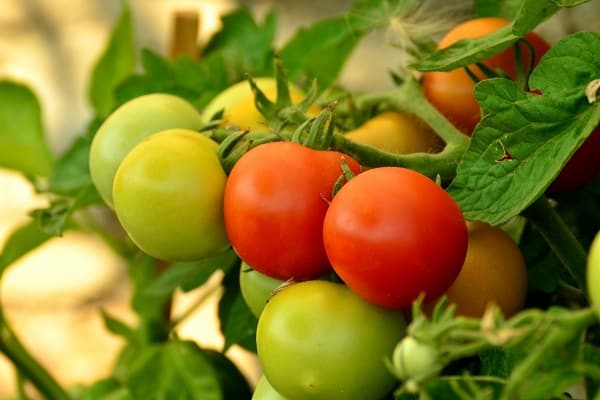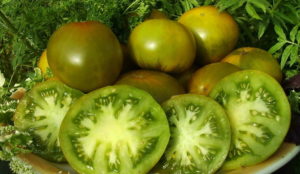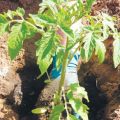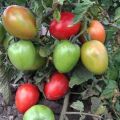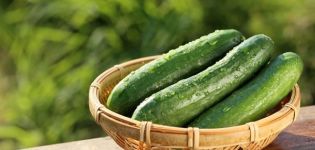Description of the tomato variety Effect, its characteristics and yield
Tomato Effect was launched on the seed market in 2008 from the originator of Agrofirm Poisk. The tomato has been highly regarded by vegetable growers and is considered ideal for fresh salads. The seed producers gave the following characteristic and description of the variety:
- mid-season (115-120 days);
- determinant bush (65-80 cm);
- yield up to 5 kg / m2;
- resistant to tobacco mosaic virus and alternaria;
- tomatoes are tasty, sweet with a slight sourness, medium density;
- salad;
- the fruit is small (80-100 g), bright red, smooth, round;
- universal (for open and protected ground).
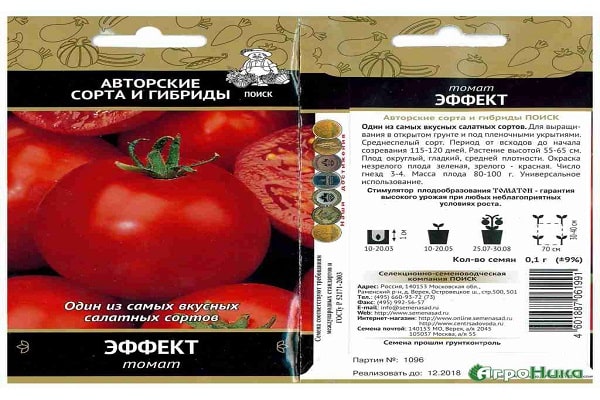
The tomato has become widespread mainly as a tomato for fresh vegetable cuts, although the reviews of vegetable growers about canning are also positive.
Growing
Tomato The effect is mid-season, the yield is not very high, about 5 kg / m2, but this is typical for delicious salad varieties. The plant spends all its energy on pouring juicy tomatoes, losing slightly in yield to other less tasty varieties for canning. Fruiting is reliable and stable until the onset of cold weather.
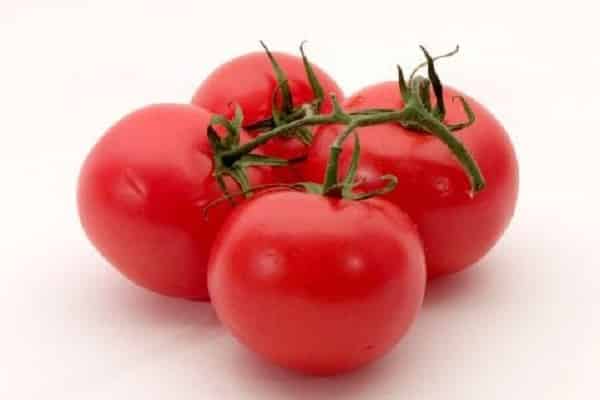
Seedling
Seedlings are sown in mid-March. The soil mixture is prepared nutritious and loose.
Advice
It is best to take the garden soil from the future garden as a basis.
So it will be easier for the seedlings to adapt after transplanting. Organic components need to be added to the soil: compost, humus. For looseness and relief, a little sawdust, peat and sand are introduced.

Important!
Sawdust should always be steamed with boiling water before use.
The soil is brought into the heat at least a day before sowing the seedlings and watered with boiling water.
The seeds are planted to a depth of 10 mm at a distance of 2-3 cm from each other. The boxes are covered with foil and placed in a warm place. The optimum temperature for germination of tomato seeds is 24-25 ℃. When shoots appear, the film is removed and the temperature must be reduced to 20-21 ℃. The tomato effect is provided with fluorescent lighting for 2-3 evening hours so that the sprouts do not stretch out.
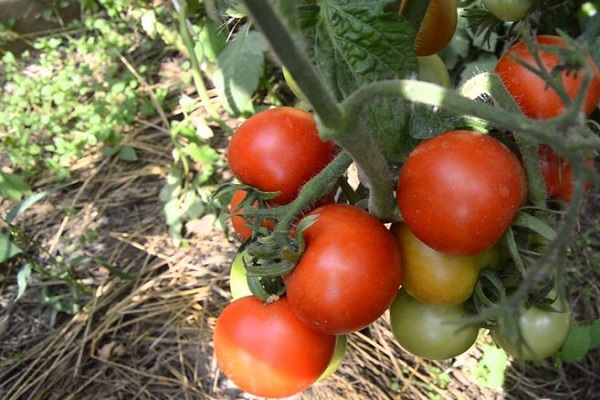
After the appearance of 1-2 true leaves, the tomatoes dive.
Advice!
If space permits, then it is better to transplant each sprout into a separate 2-3 liter pot.
This will allow the plant to develop a normal root system and it is easier to transfer the transplant to the beds. Water the tomatoes sparingly, allowing the soil to dry out enough, but preventing the sprouts from wilting. Seedlings are fed 1-2 times with complex mineral fertilizers or mullein infusion.

Hardening of seedlings
If the weather is good and the temperature rises to 20-24 ℃ during the day, then at the age of 5 weeks, the seedlings can be hardened. First, the plants are brought out for 30-40 minutes in the warmest hours, shading from direct sunlight. Every day, the time is increased by 1-2 hours.The second week, the seedlings are accustomed to direct sunlight. Temperatures below 14-15 ℃ are undesirable for tomatoes; in case of cold snaps, you can simply arrange long airing.
If the weather permits, the third week of hardening the plants are left outside around the clock. Depending on the region, transplanting seedlings is possible from mid-May to early June, at the age of 60-65 days.

Care
Tomatoes Effect belong to the determinant type of growth, therefore they do not need a garter. Plant height usually does not exceed 65-80 cm. No more than 3-4 plants are planted per 1 m2. It is useful to mulch the soil with sawdust or peat, this will eliminate the need for frequent loosening.
Water the tomatoes sparingly, letting the top layer of the earth dry out. This will give a signal to the plant to develop the root system and not outgrow the green mass to the detriment of yield. Increase watering only during the fruit filling.
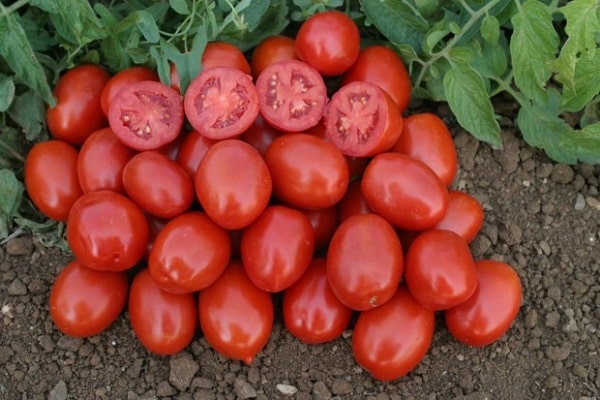
The tomato variety Effect is fed 3-4 times, if possible alternating complex mineral and organic fertilizers.
Harvest
After 115-120 days from the moment of germination, the first harvest of tomatoes can be expected. Effect. The poured ovary of tomatoes is bright green. Ripe fruits are neat, even, small in size, bright red. The pulp is very tasty, juicy, sweetish, with 3-4 seed chambers.
